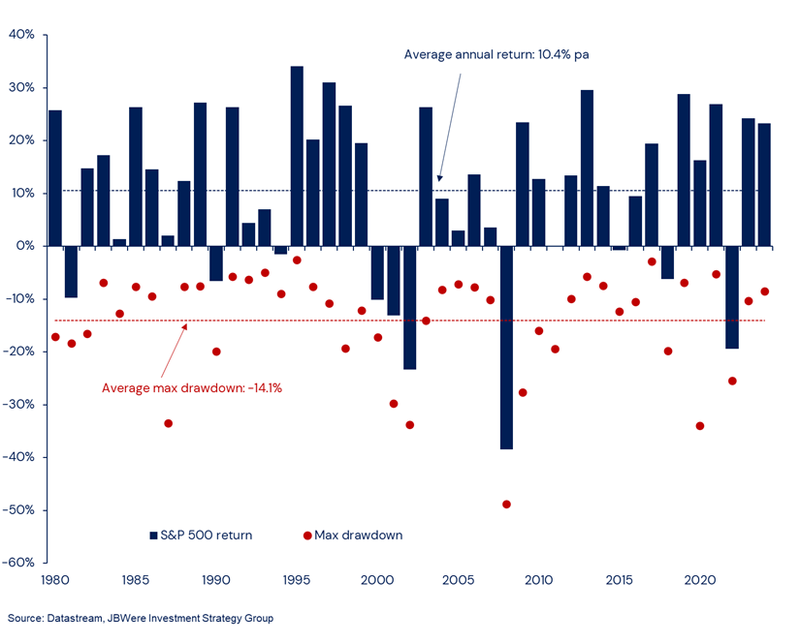What is sharemarket volatility and what should I do about it?
By MAS Team
By MAS Team
Ever checked your KiwiSaver balance only to find it has dropped dramatically overnight? Welcome to the world of sharemarket volatility, the financial rollercoaster that affects everything from your retirement savings to your investment portfolio. In this guide, we'll demystify sharemarket ups and downs for everyday Kiwi investors. We'll explore what the sharemarket actually is, what causes those heart-stopping dips, and how to keep your cool when the market seems anything but stable.

The sharemarket (sometimes called the stock market or stock exchange) is a place where people can buy and sell shares (individual units of ownership) in publicly traded companies. It functions as a marketplace that brings together people who own stakes in businesses. As these businesses grow or change, so does the value of their shares. The sharemarket acts as a dynamic environment that reflects not just company performance, but also investor sentiment, economic news, and global trends.
Major sharemarkets include the New York Stock Exchange (NYSE), the London Stock Exchange and the Tokyo Stock Exchange. In New Zealand, our local sharemarket is the New Zealand Stock Exchange (NZX). There are also sharemarket indexes that track the performance of publicly traded companies, like S&P 500 (Standard & Poor’s 500) and MSCI World Index. These indexes are widely considered a benchmark for the overall sharemarkets and often used as a stand-in for the health of the economy.
For many people, picking individual shares and monitoring the market every day can feel overwhelming or time-consuming. That’s where managed investment schemes come into play. Instead of choosing shares one by one, you can invest in a fund (a collective pool of money from many investors) that is overseen by professional fund managers. These experts make investment decisions on your behalf, using research, strategy and diversification to balance risk and opportunity.
Market volatility refers to how much and how quickly the prices of investments like shares, go up and down over a given period. Think of it as the mood swings of the financial world. Some days the market feels confident and optimistic, while other days it feels uncertain and reactive. When prices rise and fall sharply within short timeframes, we call the market ‘volatile’.
But volatility isn’t necessarily a bad thing; it’s just a measure of movement. A calm and stable market has low volatility, while a rapidly shifting one has high volatility – making it more unpredictable. Volatility presents opportunities for active managers, like MAS, to enhance returns for Members.
Market volatility is a natural part of investing. Market corrections are normal and large intra-year moves are not uncommon, even in years when positive annual returns are achieved as seen in the chart below.

This chart shows that every year has a red dot below zero, which means that drawdowns (the decline from a peak to a trough) happen regularly, even in years with positive returns. Despite these drawdowns, the blue bars show that most years ended positive, which shows that recovery is common. So, if the red dots are the storms and the blue bars are the harvest, then over time, the harvest has consistently outweighed the storms.
Volatility stems from a complex range of factors that can influence investor behaviour and economic conditions. Some of these are below. Understanding these volatility drivers can provide context for market movements and help inform investment decisions.

Yes, market volatility directly impacts your investments and can cause your balance to fluctuate. When you notice your KiwiSaver scheme or investment fund account balance going up or down, you're seeing the real-world effects of these market forces at work.
These movements are normal and expected – even the most conservative funds experience some degree of volatility, though less than more aggressive fund options. For example, conservative funds have a lower level of risk so generally fluctuate less but have lower expected returns. While growth funds have a higher level of risk with more ups and downs but a higher potential for returns.
Understanding this connection between market volatility and your personal investment balance can help you maintain perspective during market swings and stick to your long-term investment goals.
Staying the course through market swings historically leads to growth. If you panic and pull out during a drawdown, you risk missing the rebound that often follows. Successful investing through volatility combines appropriate risk assessment, diversification across and within asset classes, and maintaining a long-term perspective. Here are some things you can do:

No-one can predict with certainty when sharemarkets will stabilise after periods of volatility. Even the most experienced financial experts and economists struggle to consistently forecast market turning points with accuracy.
Rather than trying to predict when stability will return, most financial advisers recommend focusing on what you can control. This includes maintaining a diversified portfolio appropriate for your time horizon and risk tolerance, and avoiding emotional decisions during downturns. Try and remember that market volatility is a normal part of investing.
At MAS, we offer a range of investment options that can help you achieve your goals and grow your wealth. If you need some guidance, you can speak with one of our MAS Advisers in person or on the phone for general financial advice. For example, ensuring you make the right fund choice to meet your savings goals. If you would like to talk to a MAS Adviser, you can phone 0800 800 627 or email info@mas.co.nz.
This is general information only and is not intended to constitute financial advice. MAS only provides advice on products offered by its subsidiary companies. Our financial advice disclosure statement is available on our website or by calling 0800 800 627.
Medical Funds Management Limited is the issuer and manager of the MAS KiwiSaver Scheme, MAS Retirement Savings Scheme, and MAS Investment Funds. The Product Disclosure Statements are available at MAS KiwiSaver Scheme PDS, MAS Retirement Savings Scheme PDS, and MAS Investment Funds PDS.

MAS Head of Investments, Dan Mead, answers common questions about emergency funds, and shares tips on how to grow your rainy day savings.

Investment goals are specific financial objectives you aim to achieve through investing, such as saving for retirement, buying a home, or growing your wealth.

Thinking of putting your KiwiSaver contributions on holiday too? Before you make this decision, consider what you might be missing out on.